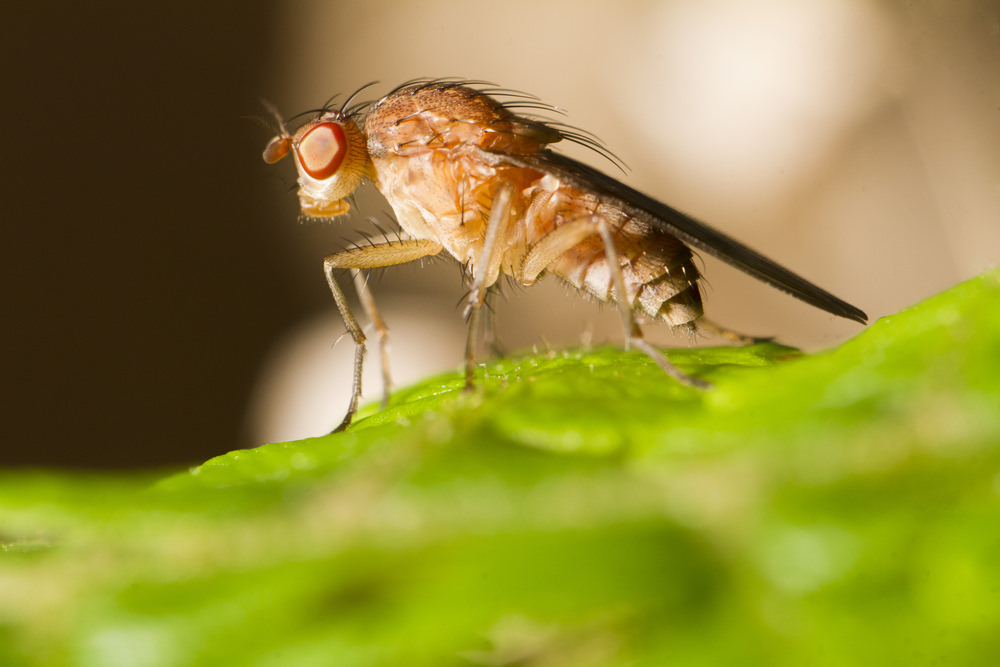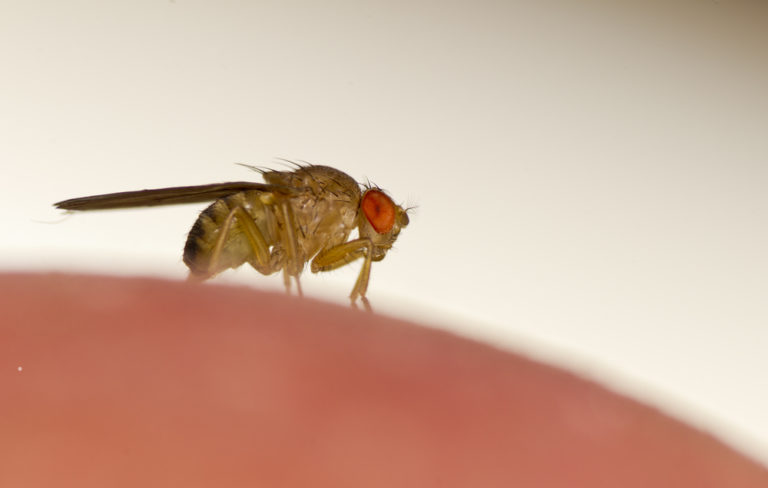Fruit Fly Eggs: Appearance and Characteristics
A fruit fly infestation can become annoying and pose dangers to your health. It’s not an easy pest to deal with. They’re difficult to spot until they’re right up in your face, and they always seem to resurface after you’ve cleaned everything out.
Naturally, the most efficient way to deal with a nemesis is to understand them. This article discusses their source, the growing process, and how to recognize them.
Here are common fruit fly egg appearances and traits:
- Cream-yellow in color
- Shaped like a rice grain
- Fruit fly larvae have light-brown bodies
- Larvae aggregate once hatched to ensure survival to pupation
- Eggs or larvae can pose health risks if consumed
Appearance and Traits of Fruit Fly Eggs and Larvae
The Appearance of Fruit Fly Eggs
Fruit fly eggs measure from a mere 0.02 to 0.04 inches in length, depending on the species. When viewed from under a microscope, they appear a cream-yellow and have the shape of a rice grain. You’ll be able to spot them with the naked eye since there tends to be many of them in one place.
Of course, you’ll have to find them first to see them. A batch of fruit fly eggs is typically concealed in a rotten piece of fruit. If you cut one open, you might find these little guys hiding in there.
Once the eggs have hatched into larvae, their light-brown bodies can acquire the color of the fruit that they live in. This can make them difficult to spot.
The Social Behaviour of Fruit Fly Larvae
Something rather interesting about the larvae is their social behavior. According to biologists, the groups of larvae that have hatched from one batch of eggs tend to aggregate, especially when the food they’re in is hard.
This ensures their survival because a group of larvae is more likely to be successful at breaking through the surface of the food than one individual. It’s essential for the larvae to find their way out to enter the next stage of their development — pupation.
What Is a Fruit Fly?
A fruit fly — Drosophila melanogaster — is a small fly commonly found around rotten fruit. There are many species, over 150 in Australia alone, and they vary in size, shape and color.
The vinegar fruit fly is the most common and is often what we see hanging around our fruit in the kitchen. They get their name from being attracted to the sour odor of fermentation. Mediterranean fruit flies are also widely common and tend to pose a threat to commercial fruit and vegetable farmers.
Fruit Fly Appearance
Fruit flies, on average, are 0.1 inches in length and most sport a yellow-brown color. Upon closer inspection, you’ll notice their body shape takes on that of a fly. This is because they’re all from the Diptera order of insects — a large head with compound eyes, short antennas, an oval-shaped body and two wings.
Fruit Fly Traits
They breed very rapidly, and each species has a unique mating ritual, including elaborate dances, territorial battles and conventional breeding.
It’s not uncommon for female fruit flies to lay over 500 eggs. The eggs are typically laid inside fermented fruit or any decaying, sugar-rich, organic matter.

Where Do Fruit Flies Come From?
When the female has breached the barrier of the fruit and laid her eggs in the moist, decaying matter, they hatch after just 24 to 30 hours. The larvae will spend the next two to five days growing in length while feeding on the fermented surroundings.
Once their nursery becomes too fermented and fungi and bacteria become too widespread, the larvae will relocate to a cooler, drier location. This is when they start to pupate. The larvae transform into sexually mature adults in the pupal case.
This process takes between seven to twelve days, depending on the temperature that they’re in. If the environment is 72 degrees Fahrenheit or more, then it can be as quick as a week. Temperatures below 64 degrees can double the time of this development.
These events of how a fruit fly grows and changes form are referred to as complete metamorphosis. Their main objective is to reproduce, which starts to happen just hours after they’ve emerged from the pupal.
The average lifespan of a fruit fly in optimal temperatures is 35 to 45 days. Colder temperatures can stunt the development of fruit flies. They typically thrive between 70 and 80 degrees Fahrenheit, which is the average temperature of the interior of most homes, even in the winter.
This is why it’s hard to get rid of them — most rooms are temperature controlled. Not to mention, they can squeeze through almost any opening and find a breeding ground. This includes your fruit bowl, trash can or even the drain since the eggs and larvae can withstand water flow. These are not to be confused with drain flies.
How Dangerous Are Fruit Flies?
Once fruit flies start laying their hundreds of eggs at a time, it can be challenging to get rid of them. They’re naturally attracted to fruit and vegetable farms, and getting rid of them can cost a farmer a lot of money.
They pick up filth and contaminants from the things they land on, including waste and sewage. If they get into contact with your skin, these bacterias can make a home there.
Can we get sick if we ingest a fruit fly, its larvae or eggs? Yes, potentially. The acid in a human’s stomach is strong enough to kill certain bacterial pathogens, but there’s the possibility of accidental gastrointestinal myiasis.
This is the process of fruit fly eggs hatching inside your intestines after you’ve consumed contaminated food. It will cause nausea, stomachaches and diarrhea. With proper medical assistance and medicine, the eggs and larvae will eventually die and be discharged through your bowels.
How to Get Rid of Fruit Flies
Every insect forms part of the greater function of ecological systems. For example, if you compost your organic matter in the garden, fruit flies will aid in the natural cycle of living things.
Given the dangers and sheer annoyance they present, they’re not something you want in your home or your body. Here are some measures you can take to reduce your risk of being exposed to fruit flies:
- Purchase and set up fruit fly traps throughout your home
- Get rid of expired food
- Keep your kitchen clean from food spills and grime
- Regularly take out the trash
- Flush cleaning fluids down the drain
Final Thoughts on Fruit Fly Eggs
To identify fruit fly eggs, look for tiny, rice grain-shaped eggs that are a creamy yellow. Fruit flies will suss out old pieces of fruit lying around, and you can be assured that they’ll lay their eggs inside. Once the eggs have hatched, the larvae start preparing for pupation. If this process goes uninterrupted, or if you don’t throw out the fruit, prepare yourself for a fruit fly infestation.

